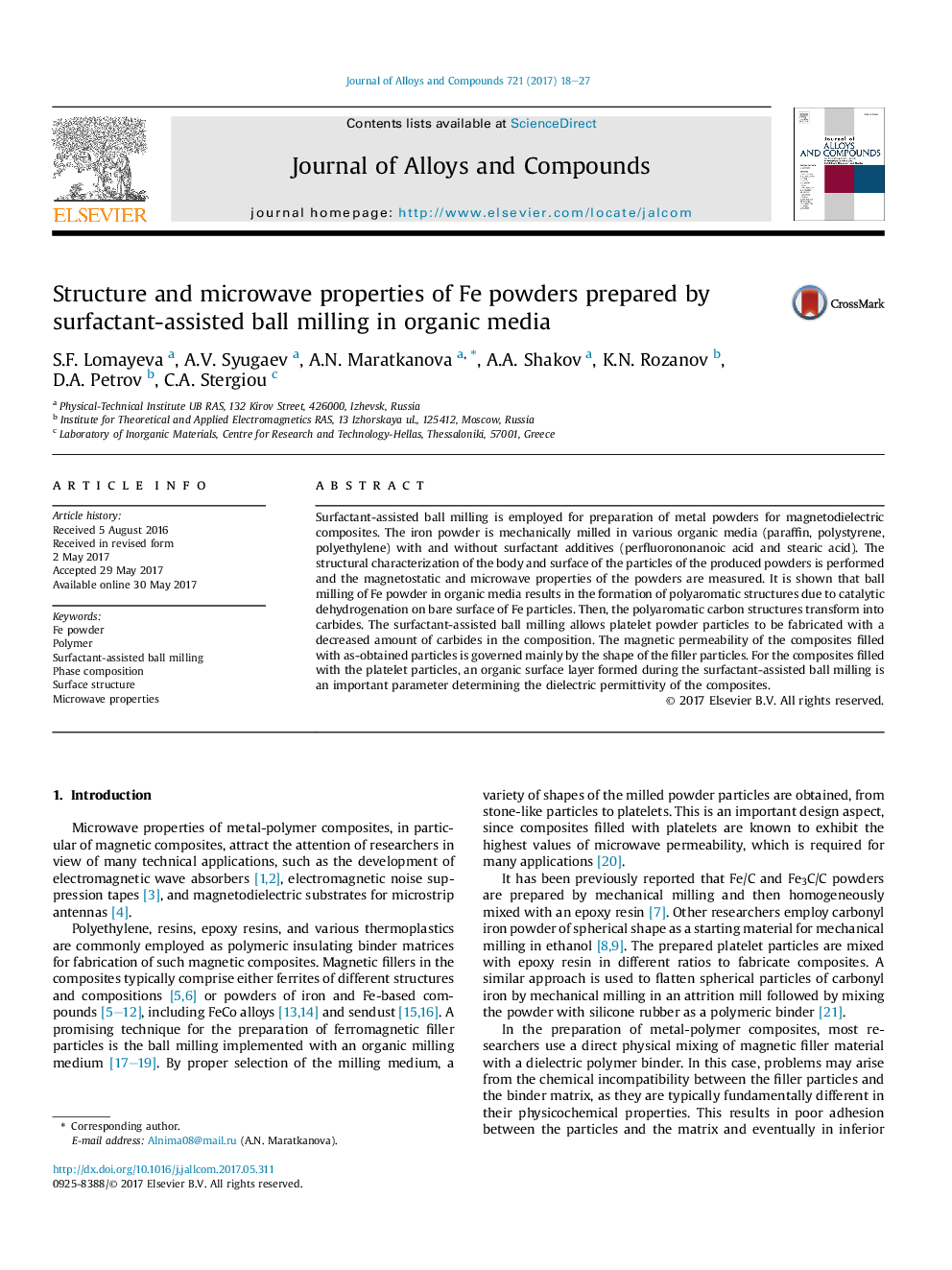| Article ID | Journal | Published Year | Pages | File Type |
|---|---|---|---|---|
| 5458573 | Journal of Alloys and Compounds | 2017 | 10 Pages |
Abstract
Surfactant-assisted ball milling is employed for preparation of metal powders for magnetodielectric composites. The iron powder is mechanically milled in various organic media (paraffin, polystyrene, polyethylene) with and without surfactant additives (perfluorononanoic acid and stearic acid). The structural characterization of the body and surface of the particles of the produced powders is performed and the magnetostatic and microwave properties of the powders are measured. It is shown that ball milling of Fe powder in organic media results in the formation of polyaromatic structures due to catalytic dehydrogenation on bare surface of Fe particles. Then, the polyaromatic carbon structures transform into carbides. The surfactant-assisted ball milling allows platelet powder particles to be fabricated with a decreased amount of carbides in the composition. The magnetic permeability of the composites filled with as-obtained particles is governed mainly by the shape of the filler particles. For the composites filled with the platelet particles, an organic surface layer formed during the surfactant-assisted ball milling is an important parameter determining the dielectric permittivity of the composites.
Keywords
Related Topics
Physical Sciences and Engineering
Materials Science
Metals and Alloys
Authors
S.F. Lomayeva, A.V. Syugaev, A.N. Maratkanova, A.A. Shakov, K.N. Rozanov, D.A. Petrov, C.A. Stergiou,
